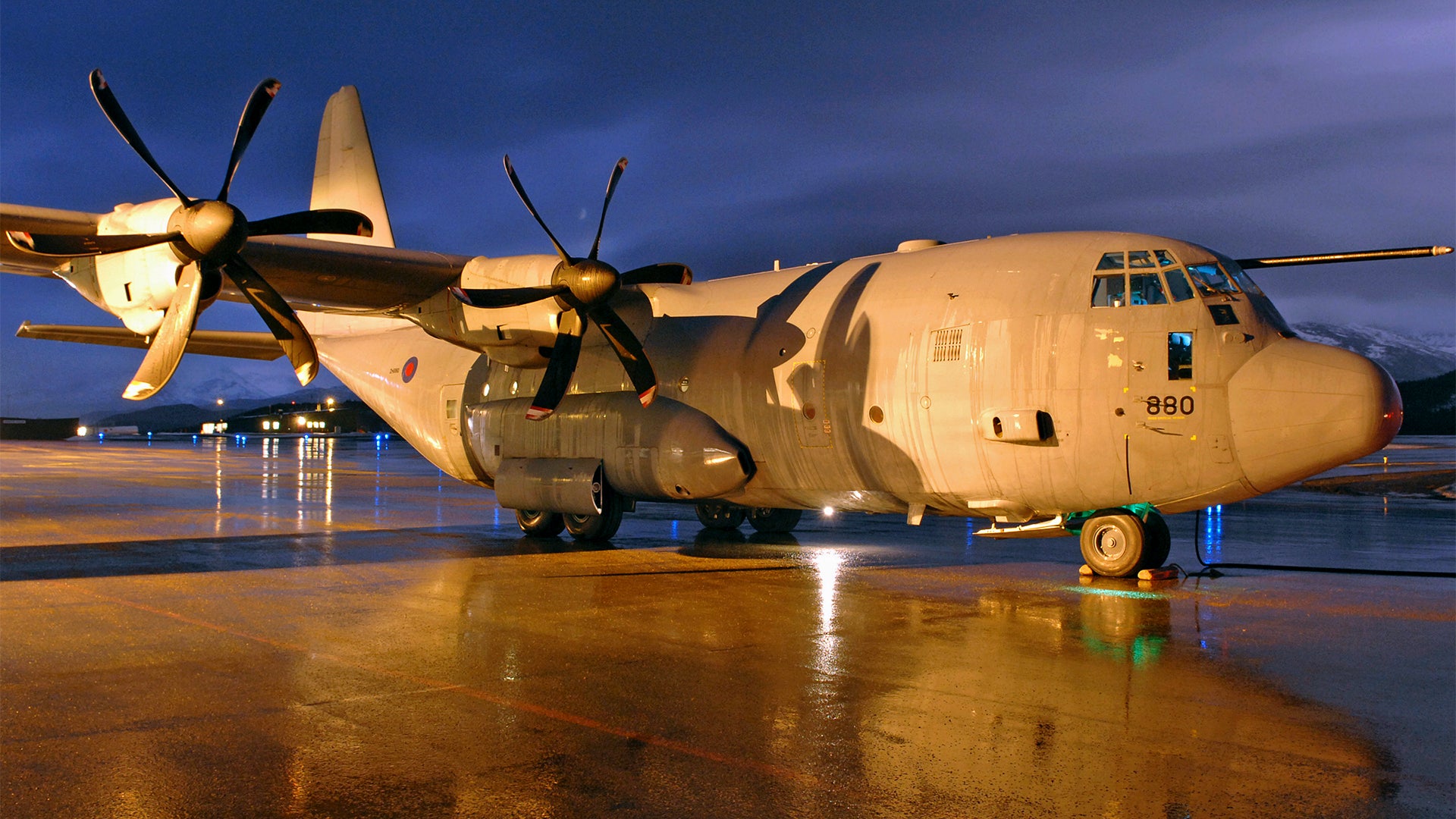It’s official, the Navy has sealed a $29.7 million deal for a second-hand C-130J Super Hercules from the Royal Air Force to replace the Blue Angels’ beloved C-130T ‘Fat Albert’ transport. That aircraft was just retired as it had reached the end of its service life after spending the last 17 years with the team and flying over 30,000 hours in support of crazy schedule. You can read all about the bittersweet end to this aircraft’s career in this past article of ours. But now we know Fat Albert’s future actually looks very bright as the surplus C-130J will bring a whole new level of performance to the Fat Albert routine and a far newer aircraft to shuffle the team around.
The ex-Royal Air Force C-130J being purchased is what that service calls a Hercules C5. It is the standard (short) fuselage Super Hercules configuration. The RAF intends to continue operating its fleet of stretched C-130J-30s. We were among the first to report on the Navy’s plan to acquire the RAF C-130J for the team back in March on 2018. We noted the following at the time:
According to our friends over at Flightglobal.com, the RAF intends to operate their 14 C-130J-30 airframes that feature stretched fuselages through 2035, but their short-fuselage C-130J models, known as C-130J C5s, have been placed in storage:
“In a controversial move, the UK government’s Strategic Defence and Security Review of 2010 proposed removing the RAF’s entire C-130J fleet from service. But with the service facing a looming tactical airlift shortfall and delays to the introduction of tactical capabilities for its incoming Airbus Defence & Space A400M Atlas, this decision was partially reversed in its 2015 review, which identified a need to retain 14 Hercules.
Flight Fleets Analyzer shows the RAF’s C4-model C-130Js as being aged between 17 and 21 years. Its short-fuselage C5-standard examples have already been retired from use or placed in storage. The UK acquired an original 25 “Super Hercules”, with one having been destroyed after sustaining damage from an improvised explosive device on landing at a remote airstrip in Iraq in 2007.”

Up until today, it looked as if the deal for the used Super Hercules was in doubt as little had been heard of it even as the team’s famous C-130T was being flown off to its final resting place. An official statement from Naval Air Systems Command reads:
The Navy announced award of the Naval Flight Demonstration Squadron’s new “Fat Albert,” the Blue Angels’ logistics cargo plane, June 13.
Scheduled for delivery in spring 2020, the $29.7 million contract was awarded to the United Kingdom Ministry of Defence (UK MOD) for a divested C-130J Super Hercules. Cost savings associated with acquisition of the used aircraft and other airworthiness requirements is approximately $50 million less than the cost of a new aircraft.
“This is a win-win for the U.S. Navy and the United Kingdom Ministry of Defence,” said Capt. Steven Nassau, PMA-207 program manager. “Just as the Navy recognized the imminent need to replace the Fat Albert aircraft, the UK MOD was divesting of an American made, C-130J; aircraft allowing us to acquire a suitable replacement aircraft at a major cost savings.”
In March 2018, PMA-207 received congressional approval to proceed with acquisition of the UK MOD C-130J with funding from Foreign Military Sales proceeds.
The last dedicated Fat Albert, a C-130T Hercules, retired May 2019 and now serves as a ground-based training platform in Fort Worth, Texas. Naval Flight Demonstration Squadron will continue flying Navy or Marine Corps C-130 Hercules assets until the replacement aircraft is complete.

With a delivery date set for spring of 2020, it sets the team up for a 2021 season that could feature a new primary mount—the F/A-18E/F Super Hornet—as well as an upgraded Fat Albert transport, both of which will also come with significantly reformulated routines. The C-130J can do some amazing things in the right hands. You can read all about the Blue Angels plans to convert to the Super Hornet here.
All said, this seems like a great deal. The Marines don’t take a hit by having to give up one of their prized KC-130Js, while at the same time the Blues get an upgrade and the Navy doesn’t have to shell out roughly $75 million for a brand new airframe. On top of all that, America’s closest ally gets to unload an airframe it no longer wants.
Talk about a second shot at life for an airplane! That C-130J will end up being the most noticeable and seen Hercules on the planet will represent the USMC in front of millions of people for years to come.
2021 can’t come soon enough!
Contact the author: Tyler@thedrive.com
